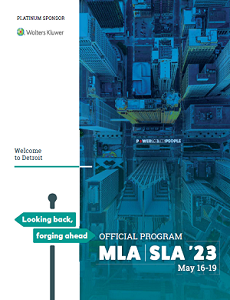Paper: Research Abstract
Information Management
Virtual
On Demand
Session: Virtual Lightning Talks and Papers 4
Advancing the role of Libraries in University-wide electronic research notebook conversations at a R1 institution
Friday, May 19, 2023
2:00 PM - 2:15 PM EDT
- PS
Plato L. Smith II
Data Management Librarian
University of Florida, Academic Consulting Research & Services (ARCS)
Gainesville, Florida
Author and Main Contact(s)
Objectives: Electronic lab notebooks, commonly referred as electronic research notebooks (ERNs) to denote scope beyond traditional wet lab, can improve data management and sharing within, across, and outside of research environments. The objective of this proposal is to articulate the development of university-wide ERN efforts at [institution] from 2020 to 2022.
1. How can the libraries start the conversation in exploring electronic research notebooks?
2. What is the role of libraries in institutional-wide electronic research notebook exploration?
3. How can the libraries as stakeholder support the university in the adoption and implementation of an institutional-wide electronic research notebook solution?
Methods: The project at used a mixed-method research approach of a quantitative and qualitative Qualtrics survey in 2020 followed by participant action research stakeholder approach in 2022. The participant action research stakeholder approach included an informal ERN task force, a formal University ERN Committee, and informal conversations with external organizations. The University ERN Committee developed 25 questions for three selected ERN vendors. The three ERN vendors were invited to give a production demonstration at [institution]. Recommendations for two ERN solutions was narrowed down to one resulting in submission to the Office of Provost. Informal ERN conversations with two external institutions provided additional ERN experiences, insights, and perspectives which were helpful to the informal ERN task force at [institution].
Results: The results from an IRB-approved 2020 survey provided the foundation on which to develop an ERN presentation and published journal article in 2022 that led to development of an informal ERN task force which influenced development of an official University ERN Committee. A price quote for three ERN vendor solutions was submitted to the Office of Provost for consideration. The official University ERN Committee developed 25 questions for ERN vendors to answer prior to vendor presentations at [institution]. The recommendations resulted in two ERN vendors then one vendor. A final recommendation with price quote was sent to Office of Provost.
Conclusions: Based on conversations with external organizations, the College of Medicine led ERN exploration, adoption, and implementation without the libraries involved in the process except for one institution in which the libraries serves as the administrator for the institutional-wide license for support and training. In order for an institutional-wide ERN to be successful, collaborations across multiple units, particularly the libraries a stakeholder, are key in exploration, evaluation, adoption, and implementation. An official University ELN Working Group comprised of management, PIs, research, academic units, scientists at all levels and the institute's IT department and the Libraries is best qualified for formal assessment and selection of an institution-wide ELN solution. The Libraries as collaborator, partner, and stakeholder in this project was socio-technically enlightening.
1. How can the libraries start the conversation in exploring electronic research notebooks?
2. What is the role of libraries in institutional-wide electronic research notebook exploration?
3. How can the libraries as stakeholder support the university in the adoption and implementation of an institutional-wide electronic research notebook solution?
Methods: The project at used a mixed-method research approach of a quantitative and qualitative Qualtrics survey in 2020 followed by participant action research stakeholder approach in 2022. The participant action research stakeholder approach included an informal ERN task force, a formal University ERN Committee, and informal conversations with external organizations. The University ERN Committee developed 25 questions for three selected ERN vendors. The three ERN vendors were invited to give a production demonstration at [institution]. Recommendations for two ERN solutions was narrowed down to one resulting in submission to the Office of Provost. Informal ERN conversations with two external institutions provided additional ERN experiences, insights, and perspectives which were helpful to the informal ERN task force at [institution].
Results: The results from an IRB-approved 2020 survey provided the foundation on which to develop an ERN presentation and published journal article in 2022 that led to development of an informal ERN task force which influenced development of an official University ERN Committee. A price quote for three ERN vendor solutions was submitted to the Office of Provost for consideration. The official University ERN Committee developed 25 questions for ERN vendors to answer prior to vendor presentations at [institution]. The recommendations resulted in two ERN vendors then one vendor. A final recommendation with price quote was sent to Office of Provost.
Conclusions: Based on conversations with external organizations, the College of Medicine led ERN exploration, adoption, and implementation without the libraries involved in the process except for one institution in which the libraries serves as the administrator for the institutional-wide license for support and training. In order for an institutional-wide ERN to be successful, collaborations across multiple units, particularly the libraries a stakeholder, are key in exploration, evaluation, adoption, and implementation. An official University ELN Working Group comprised of management, PIs, research, academic units, scientists at all levels and the institute's IT department and the Libraries is best qualified for formal assessment and selection of an institution-wide ELN solution. The Libraries as collaborator, partner, and stakeholder in this project was socio-technically enlightening.

.png)
